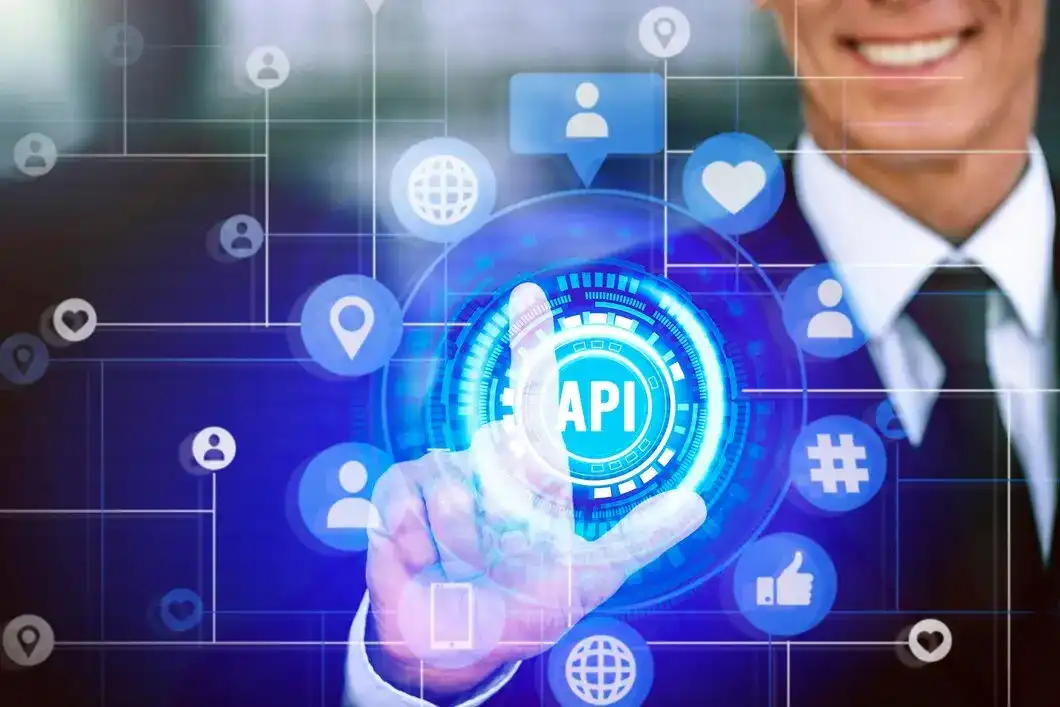Manage Remote Work Successfully
Emily Willis

Photo: Manage Remote Work Successfully
Mastering Remote Work: A Comprehensive Guide to Success
The landscape of work has undergone a profound transformation, with remote work evolving from a niche perk to a fundamental operational strategy for countless organizations worldwide. This shift, accelerated by recent global events, has opened doors to unprecedented flexibility and access to a global talent pool, but it also presents unique challenges that demand strategic management. Successfully navigating the complexities of a distributed workforce requires a deliberate approach to communication, collaboration, productivity, and employee well-being. This article delves into actionable insights and best practices to help individuals and organizations thrive in the remote work era.
The Rise of Remote Work: A New Paradigm
Remote work, once considered an alternative, is now a critical component of many organizations' strategies. Data indicates a significant increase in remote work adoption, with projections showing continued growth. For instance, approximately 28% of employees globally worked remotely in 2023, a rise from 20% in 2020. In the United States, about 22.8% of employees worked remotely at least part-time as of August 2024, translating to approximately 35.1 million people. This trend reflects a growing integration of remote work into long-term business strategies, driven by its numerous benefits.
The advantages are compelling for both employees and employers. Employees often experience improved work-life balance, reduced commute times, and greater autonomy over their work environment, leading to higher job satisfaction and decreased stress. For businesses, remote work can lead to increased productivity, significant cost savings on office space and utilities, and access to a broader, more diverse global talent pool. Companies embracing remote work have reported increased productivity, with one study indicating a 13% rise attributed to fewer distractions and breaks. Furthermore, employee loyalty can increase, with one study finding 74% of workers are more loyal to companies that offer work-from-home options.
However, the transition isn't without its hurdles. Challenges include maintaining clear communication, fostering team cohesion, preventing burnout, and ensuring robust cybersecurity. The absence of in-person interaction can complicate performance management and lead to feelings of isolation.
Setting Up Your Remote Workspace for Optimal Productivity
Creating a dedicated and ergonomic workspace is paramount for remote work success. It helps establish a clear boundary between professional and personal life, signaling to your brain that it's time to focus.
Designate a Dedicated Space
Even if it's not a separate room, having a consistent workspace helps you mentally transition into work mode. Avoid working from your bed or couch, as these areas are associated with relaxation and can blur the lines, potentially leading to fatigue and reduced productivity. A clean and organized workspace can also reduce distractions and improve concentration.
Invest in Ergonomics and Technology
A comfortable and supportive setup is crucial for long-term health and productivity.
- Ergonomic Furniture: A good chair and desk setup can prevent discomfort and improve posture, crucial for extended periods of sitting.
- Reliable Technology: Ensure you have a dependable computer, high-speed internet, and all necessary software installed. A mobile hotspot or a phone plan that allows tethering can serve as a backup for internet outages.
- Multiple Monitors: For many roles, multiple monitors can significantly enhance efficiency.
- Lighting: Natural light is ideal, but if unavailable, invest in a good quality desk lamp to reduce eye strain.
Mastering Time Management and Productivity
Remote work demands a high degree of self-motivation and effective time management. Without the traditional office structure, individuals must proactively manage their schedules and tasks.
Establish a Consistent Routine
Creating a daily routine helps structure your day and boosts productivity. This could involve a morning routine that signals the start of work, such as getting dressed in work-appropriate clothes. Stick to regular work hours and take consistent breaks to avoid overworking and burnout.
Prioritize and Plan Your Day
At the end of each workday, jot down a to-do list for the next day, detailing tasks and deadlines. This helps you start focused and accountable.
- Task Management Tools: Utilize tools like Trello, Asana, or Jira to track progress and manage tasks efficiently.
- Time Blocking: Allocate specific blocks of time for different tasks, especially for deep work, and schedule calls for less focused periods.
- Batch Emails: Set specific times for checking and responding to emails to minimize digital distractions and maintain focus.
Minimize Distractions
The home environment can present numerous distractions.
- Digital Distractions: Log out of social media accounts, disable notifications, and put your phone away during work hours.
- Family Distractions: If you have family at home, establish clear rules and guidelines regarding interruptions during work hours. Communicate when you'll be in deep focus mode and when you're available for questions.
Effective Communication in a Remote Environment
Clear, consistent, and empathetic communication is the cornerstone of successful remote work. It helps bridge physical distance, prevent misunderstandings, and foster a sense of connection.
Over-Communicate and Be Explicit
In a remote setting, it's essential to over-communicate to ensure everyone is on the same page and to prevent misunderstandings. Be proactive in your communication, and don't hesitate to ask for clarification.
- Set Clear Expectations: Managers should clearly communicate goals, responsibilities, and performance expectations from day one. This transparency fosters a sense of connectedness and helps employees understand their role in achieving organizational objectives.
- Document Everything: Document workflows, roles, and processes, making information easily accessible to all remote employees. This reduces bottlenecks and enhances productivity.
Leverage Diverse Communication Channels
Relying on a single communication method can lead to fatigue and missed context. Employ a mix of tools for different purposes.
- Video Conferencing: Use platforms like Zoom or Microsoft Teams for meetings, brainstorming sessions, and one-on-one check-ins. Video calls help build rapport, evoke empathy, and make interactions more meaningful by allowing for visual cues.
- Instant Messaging: Tools like Slack or Microsoft Teams are excellent for quick updates, informal chats, and real-time communication. Some companies even create "water cooler" channels for non-work-related discussions to foster social connections.
- Project Management Platforms: Tools like Asana, Trello, Jira, or Monday.com facilitate task assignment, progress tracking, and collaboration on projects.
- Cloud Storage and Collaboration: Platforms like Google Drive or Dropbox enable real-time co-authoring of documents and seamless file sharing, ensuring everyone works on the latest versions.
Establish Communication Norms
Agree on which channels to use for different types of communication (e.g., urgent messages, project updates, informal discussions). This helps manage expectations regarding response times and availability.
Maintaining Work-Life Balance and Well-being
One of the most significant challenges of remote work is the blurring of boundaries between professional and personal life, which can lead to burnout. Prioritizing well-being is crucial for sustained productivity and overall happiness.
Set Clear Boundaries
- Define Work Hours: Establish clear start and end times for your workday and stick to them. Communicate these hours to your colleagues.
- Unplug Regularly: Make it a habit to log off at the end of the day and take breaks throughout. Step away from your workspace, take a walk, listen to music, or engage in a hobby to decompress.
- Separate Devices: If possible, use separate devices for work and personal use, or at least different browsers, to create a mental separation.
Prioritize Self-Care
- Physical Health: Incorporate regular exercise, healthy eating, and sufficient sleep into your routine. Even short breaks for stretching or a quick walk can make a difference.
- Mental Health: Be mindful of your mental well-being. Practice stress management techniques like mindfulness meditation. Companies should offer mental health resources and encourage open communication about challenges.
- Social Connection: Combat feelings of isolation by proactively connecting with colleagues and friends. Schedule virtual coffee chats or participate in virtual team-building activities.
Fostering Team Cohesion and Engagement
Building a strong team spirit and maintaining engagement can be more challenging in a distributed environment, but it's vital for success.
Cultivate a Culture of Trust and Transparency
Trust is the foundation of any successful team, and its importance is magnified in remote settings. Managers should focus on outcomes rather than micromanaging activities, empowering employees to take ownership of their work. Transparency about goals, expectations, and progress helps build trust [11,
Latest ✨
View Allimpact of inflation on households and businesses, outlining the causes and consequences of rising prices. It provides strategies for both households and businesses to cope with inflation, such as budgeting, seeking deals, and negotiating with suppliers. The importance of collaboration and communication between governments, businesses, and consumers is emphasized, along with the need for long-term investments in infrastructure, skills development, and sustainable practices.
Emily Willis
Meta Description: Discover the top skills junior software developers need to master in 2024 to excel in their careers. From coding languages to soft skills, this blog reveals the secrets to staying ahead in the dynamic world of software development.
Emily Willis
Senior secured financing explained: benefits, types, tips, and real-world examples to help businesses access low-risk, asset-backed capital solutions.
Emily Willis
Explore the vital role of financial regulators, the unsung heroes who protect your savings, prevent crises, and ensure a stable, thriving economy.
Emily Willis
Business
View All
June 9, 2025
Find Your Next Great Business IdeaUnlock your next great business idea! Learn a structured process to discover, evaluate, and refine entrepreneurial opportunities for real-world success.
Emily Willis

June 8, 2025
SEO Strategy to Rank Higher (2025)Master SEO in 2025! Discover essential strategies for user experience, AI, and E-A-T to rank higher and capture organic traffic.
Emily Willis

June 8, 2025
Agile Project Management for ResultsAgile project management: an iterative, flexible approach delivering continuous value & achieving tangible business outcomes through customer feedback.
Emily Willis
Economy
View AllGlobalization has a profound impact on the economies of developing countries, offering both opportunities and challenges. By increasing access to markets, facilitating technology transfer, creating jobs, and promoting cultural exchange, globalization can drive economic growth and development. However, addressing the challenges of economic inequality, loss of domestic industries, environmental impact, and cultural homogenization is essential to ensure sustainable and inclusive growth. By adopting strategic measures and fostering international cooperation, developing countries can maximize the benefits of globalization and build a brighter future
Read MoreNavigate financial markets confidently! This guide demystifies risk management, helping you protect investments, enhance stability, and secure your financial fu...
Read MoreDemystify the unemployment rate. Learn what it signifies, how it's measured, and why this economic barometer impacts your daily life.
Read MoreEntertainment
View All
August 4, 2024
The Future of Cinema: Trends in Film Production, Distribution, and Audience Engagementthe ever-evolving landscape of cinema, driven by technological advancements, changing audience preferences and innovative storytelling approaches. The exhibition explores trends such as digital filmmaking, virtual production, the dominance of streaming services, hybrid release models, and the revitalization of cinemas.
Emily Willis

August 5, 2024
Music's Evolving Landscape: Technology, Social Media, and Global TrendsThe music industry has undergone significant changes due to technological advancements, social media, and a growing global audience. The shift from analog to digital formats, the rise of streaming services, and the impact of social media on artist-fan relationships are explored.
Emily Willis

August 5, 2024
Fandom's Power: Passionate Communities and Cultural ImpactFandoms are dedicated groups of fans who come together around a shared love for a book series, movie franchise, or other interest. They provide a sense of belonging and community for individuals, particularly those who may feel like outsiders in their everyday lives.
Emily Willis
Health
View Allour minds are often overwhelmed with information and stimuli, leading to stress and anxiety. Mindfulness and meditation offer tools to cultivate inner peace and well-being. Mindfulness involves being present in the moment without judgment, while meditation involves focusing attention on an object or thought.
Emily Willis
Regular exercise is essential for maintaining both physical and mental health. It helps with weight management, cardiovascular health, muscle strength, energy levels, and sleep quality. Exercise also reduces stress and anxiety, improves mood, cognitive function, and self-esteem, and lowers the risk of depression. Different types of exercises, such as aerobic, strength training, flexibility, balance, and mind-body exercises, contribute to overall health. To start and maintain an exercise routine, it is important to start slowly, set realistic goals, find enjoyable activities, stay consistent, and listen to your body.
Emily Willis
Heart disease is a leading cause of death globally, but early detection and prevention strategies can reduce its impact. This article discusses the importance of early detection, common risk factors, preventive measures, and lifestyle changes for heart health. Understanding heart disease, recognizing symptoms, and undergoing regular screenings are crucial. Common risk factors include high blood pressure, high cholesterol, diabetes, smoking, obesity, physical inactivity, and family history. Symptoms of heart disease include chest pain, shortness of breath, fatigue, irregular heartbeat, and swelling. Diagnostic tests and screenings include blood pressure measurement, cholesterol screening, blood glucose test, ECG, stress test, and imaging tests. Preventive measures include adopting a heart-healthy diet, regular physical activity, quitting smoking, managing stress, maintaining a healthy weight, and limiting alcohol consumption. Medications and treatment options may be necessary for individuals at high risk or diagnosed with heart disease.
Emily Willis
Trending 🔥
View All
1
2
3
4
5
6
7
8
9
Lifestyle


Sports
View AllAugust 5, 2024
Sportsmanship in the Spotlight: Cultivating Respect, Integrity, and Ethical Behavior
Read MoreAugust 5, 2024
The Future of Sports: Anticipating Trends, Embracing Innovation, Shaping a New Era
Read MoreTechnology
View All
August 5, 2024
What is Blockchain and How does it Work?
Blockchain technology is a decentralized digital ledger that records transactions securely and transparently across multiple computers. Key concepts include decentralization, cryptographic security, and consensus mechanisms. Transactions are verified, grouped into blocks, and added to the blockchain through a consensus process.

August 5, 2024
Top 5 VR Headsets for PC Gaming in 2024
Discover the top 5 VR headsets for PC gaming in 2024! Immerse yourself in stunning visuals, immersive audio, and intuitive controls with these powerful VR devices. From high-end options to budget-friendly alternatives, we've got you covered on your journey to the ultimate VR experience.

August 5, 2024
AI Trend Predictions for 2024 and beyond
AI is no longer a futuristic concept, it is shaping our world at an unprecedented pace. In 2024 and beyond, AI trends are likely to dominate in various industries. Generative AI is expected to revolutionize content creation, design, and product development. In healthcare, AI will lead to personalized medicine, drug discovery acceleration, improved diagnostics, and remote patient monitoring.

August 5, 2024
Best AR Apps for Interior Design
Discover the top AR apps for interior design and transform your space with ease! From furniture placement to paint colors, these innovative tools will revolutionize the way you decorate, making your home design dreams a reality



















